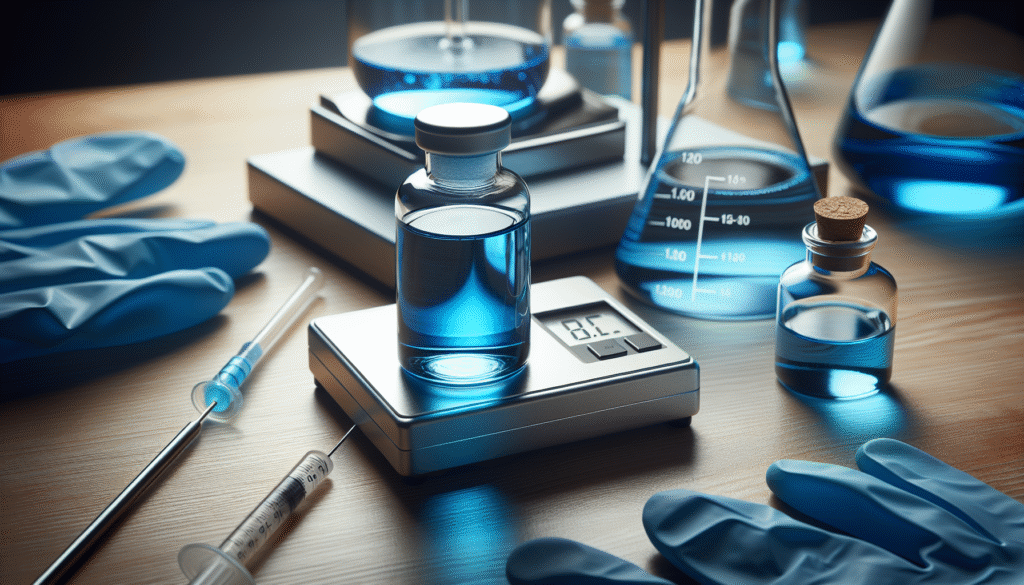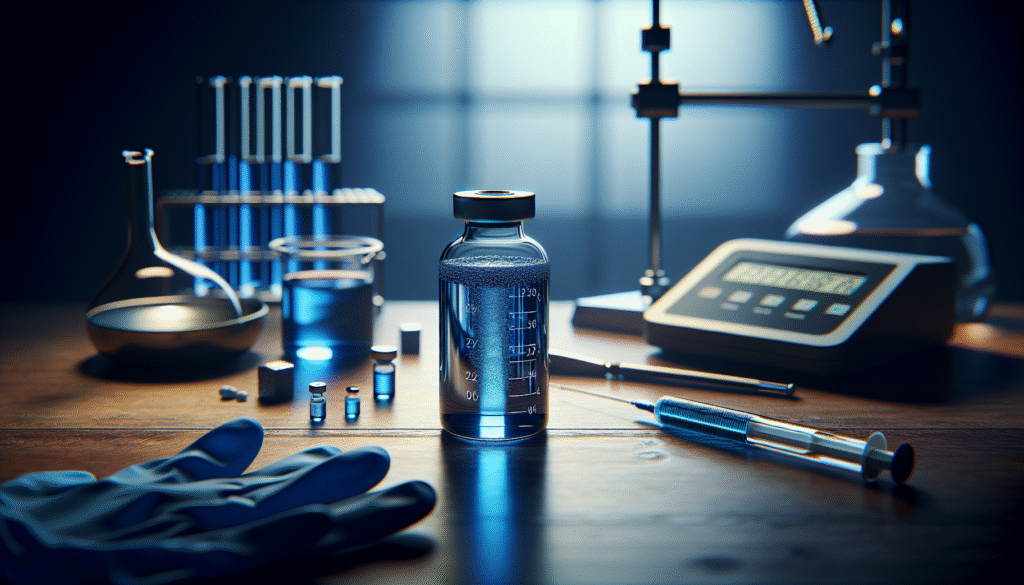
Have you ever considered the importance of safely handling and storing chemical substances in your laboratory? Understanding the intricacies of this process is not just a matter of following protocols but is essential for personal safety, the efficacy of chemical reactions, and the preservation of the substance itself. This article focuses on one such compound: Methylene Blue.

What is Methylene Blue?
Methylene Blue is a synthetic dye with a range of applications, notably in biology as a staining agent. It has been linked to various uses, from treating certain medical conditions to serving as an indicator in redox reactions. Given its broad utility, understanding how to properly store and handle Methylene Blue is critical for maintaining its integrity and safety.
Chemical Properties
Understanding the chemical properties of Methylene Blue can help you appreciate why proper storage and handling are essential. Methylene Blue has the chemical formula C16H18ClN3S and appears as a blue crystalline powder. It is soluble in water and can form a stable solution, yet environmental conditions can affect its stability.
| Property | Value |
|---|---|
| Molecular Weight | 319.85 g/mol |
| Solubility in Water | 1 g in 3 mL |
| Melting Point | 100 °C |
| pH at Solubility | 6.0 – 7.5 |
Understanding these properties will guide you in maintaining the quality of Methylene Blue throughout its lifecycle.
Safety Precautions
Before handling Methylene Blue, it is vital to consider the associated safety precautions. Chemical exposure can have adverse effects, and Methylene Blue is no exception. Familiarizing yourself with the potential hazards can aid in mitigating risks.
Personal Protective Equipment (PPE)
When working with Methylene Blue, wearing appropriate Personal Protective Equipment (PPE) is crucial. The following items are essential:
- Gloves: Nitrile or neoprene gloves should be worn to prevent skin contact.
- Lab Coat: A lab coat can protect your clothing and skin.
- Safety Goggles: These protect your eyes from accidental splashes.
- Mask: While Methylene Blue is not airborne, a mask is recommended if you are working in a poorly ventilated area or handling large quantities.
First Aid Measures
In case of exposure, knowing first aid measures is crucial. Here’s a quick reference:
| Exposure Type | First Aid Measures |
|---|---|
| Skin Contact | Wash immediately with soap and water for at least 15 minutes. If irritation persists, seek medical attention. |
| Eye Contact | Rinse with water or saline solution for at least 15 minutes and consult a physician. |
| Ingestion | Rinse mouth with water. Do not induce vomiting. Seek medical attention immediately. |
| Inhalation | Move to fresh air. If breathing is difficult, seek medical help. |
Awareness of appropriate first aid protocols significantly enhances safety in the lab environment.
Storage Recommendations
The right storage conditions for Methylene Blue will help preserve its stability and potency. Following these guidelines will ensure that you maintain the quality of this dye.
Ideal Conditions
Methylene Blue should be stored in a cool, dry place away from direct sunlight. Ideally, conditions should include:
- Temperature: Store at room temperature (20-25 °C).
- Humidity: Keep humidity levels low to prevent degradation.
- Light: Protect the substance from exposure to light, as this can cause photodegradation.
Container Selection
Selecting the appropriate container is also essential. Methylene Blue should be kept in:
- Opaque Glass Bottles: These can prevent light from degrading the compound.
- Tightly Sealed Containers: This helps prevent contamination and slows down any potential reaction with humidity.
The right container combined with optimal storage conditions significantly contributes to the longevity of Methylene Blue.
Handling Procedures
Safe handling procedures are paramount when working with Methylene Blue. Familiarity with these processes will help you avoid accidents.
Preparation and Measurement
When preparing and measuring Methylene Blue:
- Use a Fume Hood: Always work in a fume hood if possible.
- Utilize Proper Equipment: Use calibrated pipettes or syringes for accurate measurements.
- Avoid Cross-contamination: Always use clean tools and avoid touching the chemical with bare hands.
Being meticulous during these procedures can significantly minimize the risk of mishandling.
Working with Solutions
When preparing solutions of Methylene Blue:
- Dilution: Always add Methylene Blue to the solvent, not the other way around, to avoid exothermic reactions.
- Mixing: Stir the solution gently; vigorous stirring can lead to foam formation.
Employing these techniques will help in maintaining the integrity of your solutions.

Disposal Considerations
Disposing of Methylene Blue must be carried out according to your local regulations. Compliance with these regulations is essential to ensure environmental safety and public health.
Waste Segregation
Methylene Blue waste should be segregated from other wastes. Follow these steps:
- Liquid Waste: Collect and store in an appropriate waste container labeled for hazardous waste.
- Solid Waste: If using solid Methylene Blue, dispose of it in designated solid toxic waste containers.
Consult Local Regulations
Consulting your local health and safety regulations regarding the disposal of chemicals is crucial. Familiarize yourself with guidelines provided by the Environmental Protection Agency (EPA) or your local regulatory agencies.
Environmental Impact
Considering the environmental impact of Methylene Blue is vital to responsible chemical management. Understanding its potential effects can guide responsible usage and disposal.
Ecotoxicity
Methylene Blue is harmful to aquatic life, and its presence in waterways can have detrimental effects. It has been reported to cause toxicological effects on fish and other aquatic organisms, reinforcing the need for careful disposal and handling practices.
Minimizing Impact
To minimize environmental impact, practice the following:
- Proper Disposal: Ensure that no waste is introduced into the sewer system.
- Neutralization: If applicable, neutralize solutions before disposal.
- Education: Educate colleagues and staff about the hazards associated with Methylene Blue.
Being proactive about environmental responsibilities will foster a culture of safety and stewardship in your workplace.
Conclusion
Effectively storing and handling Methylene Blue is not merely an administrative task; it is a cornerstone of laboratory safety and integrity. By adhering to the safety precautions, storage recommendations, proper handling procedures, and disposal considerations outlined in this guide, you can mitigate risks and maintain both personal and environmental safety.
Your knowledge and actions will lead to safer laboratory practices and a greater understanding of the chemical compounds you work with. Treat every interaction with Methylene Blue as an opportunity to reinforce these essential principles and ensure a culture of safety within your working environment.